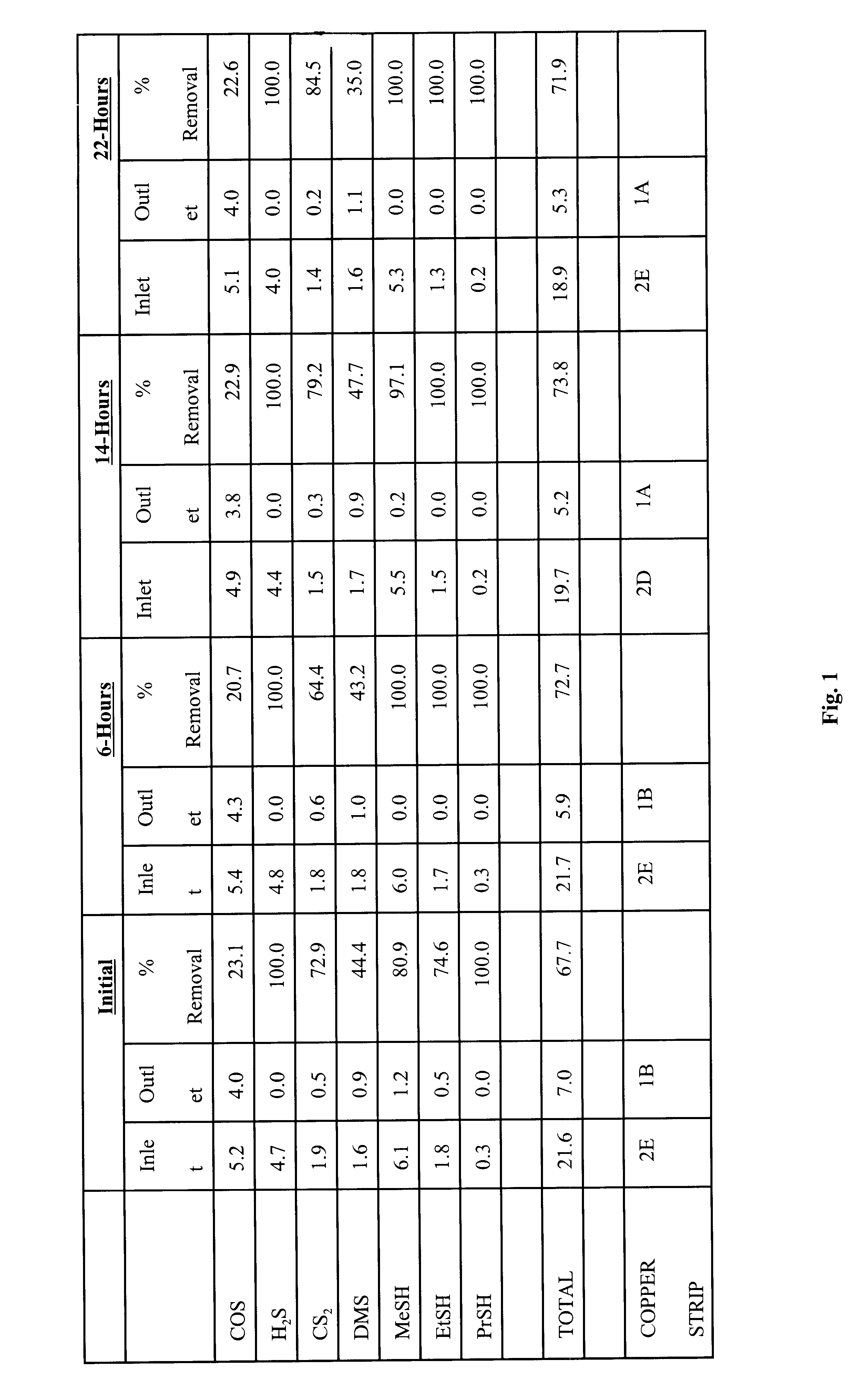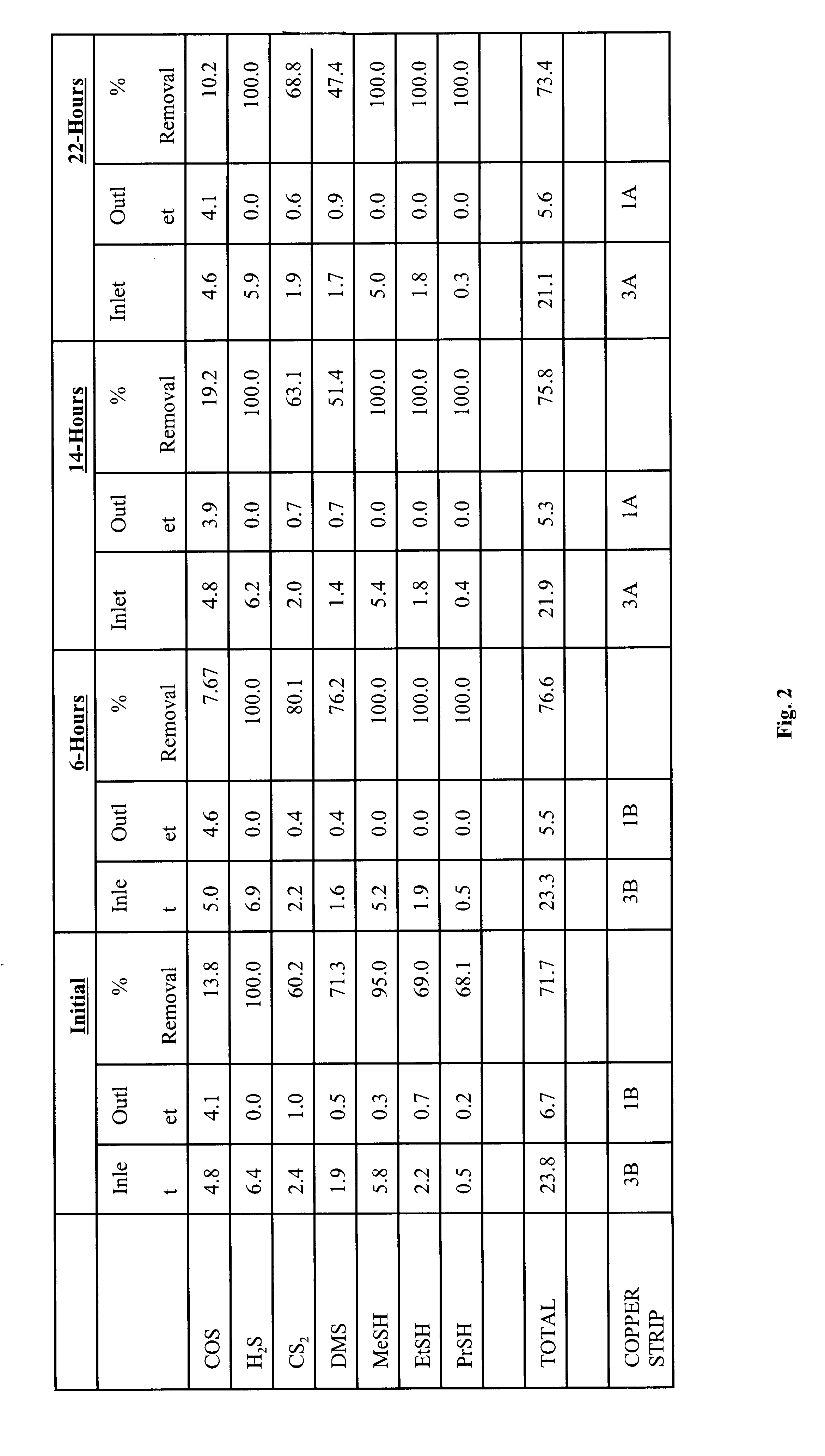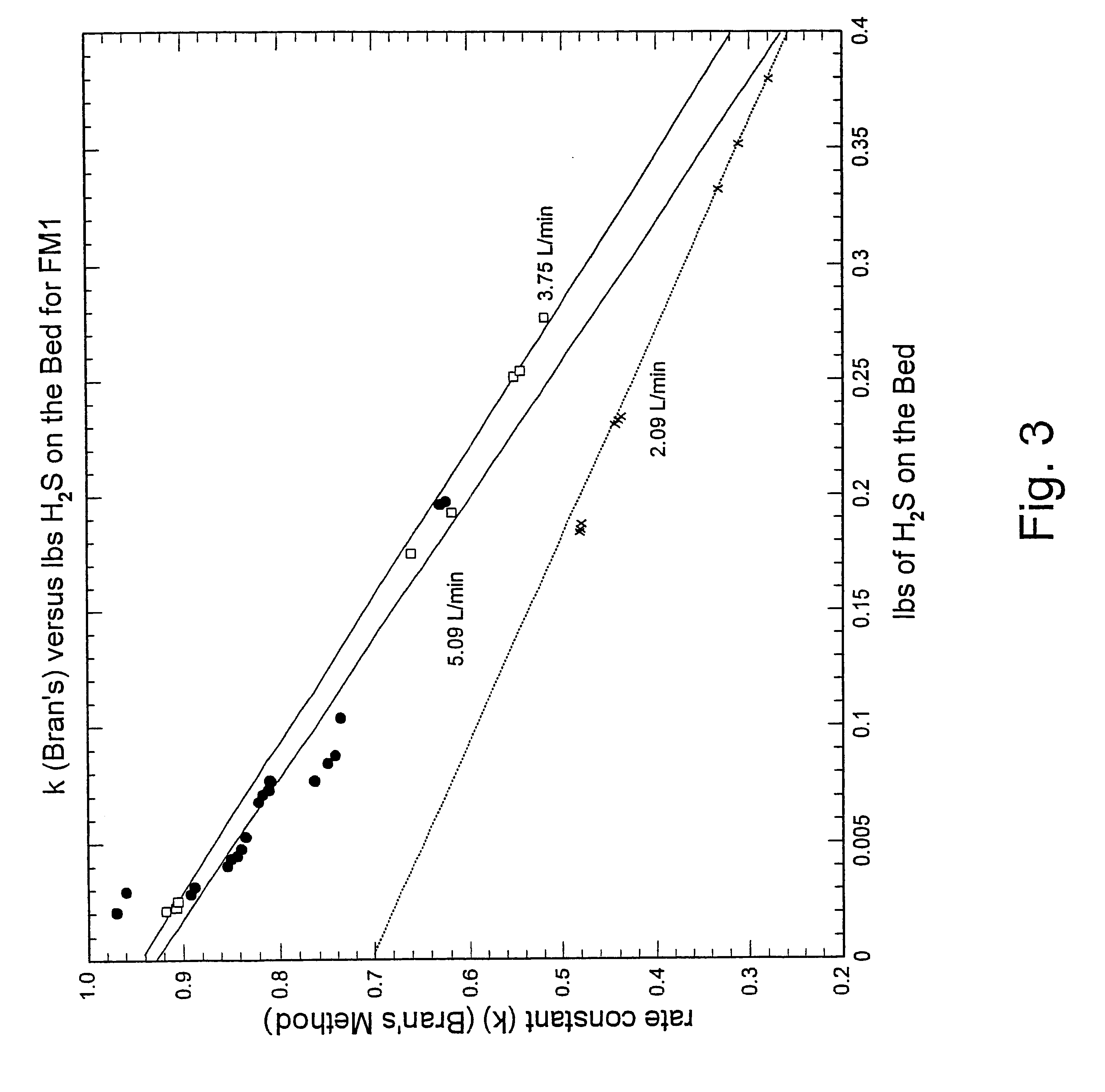Compressed metal oxide product
- Summary
- Abstract
- Description
- Claims
- Application Information
AI Technical Summary
Benefits of technology
Problems solved by technology
Method used
Image
Examples
example 1
A test was conducted to determine the effectiveness of extruded pelletized iron oxide in removing sulfur species contaminants, including, hydrogen sulfide, carbonyl sulfide, mercaptans, and possibly carbon disulfide. The test was initiated by packing a 2 inch by 12 inch column with approximately 1.25 pounds, or approximately 10 inches, of pelletized iron oxide media. The iron oxide pellets were comprised of black iron oxide and a starch binder. An inlet valve was located at the bottom of the column so that contaminated liquid entered the column at the bottom and exited the top of the column. The gas to be purified was liquid propane contaminated with various sulfur species contaminants, including hydrogen sulfide, carbonyl sulfide, and light mercaptans. Measurements to determine the amount of sulfur contaminants were made when the gas entered the column and when the gas exited the column, with measurements taken at different times. FIG. 1 shows the initial amounts of various sulfur ...
example 2
The same procedure as Example 1 was followed except pelletized zinc oxide was tested instead of pelletized iron oxide. The conditions were as follows:
The results of the test are disclosed in FIG. 2. It was observed that the pelletized zinc oxide, in general, removed most sulfur compounds except COS. Use of the pelletized zinc oxide resulted in suitable elimination of most sulfur compounds. This was considered important because normally zinc oxide suitably eliminates sulfur contaminants at higher temperatures. At ambient conditions, zinc oxide will typically hold between 3% and 8% total sulfur.
example 3
Tests were conducted to determine the relative crush strength of pelletized iron oxide particles. Three types of iron oxide known as FM1 (Ferrimagnetic 1), FM2 (Ferrimagnetic 2), and Hoover were pelletized, with all three types of iron oxide being a similar black iron oxides. The FM1 and FM2 iron oxides are ferrimagnetic porous iron oxide particles believed to range in size from 1.5 microns to 50 microns, with a hypothesized surface area of 10 m.sup.2 / gm. The Hoover oxide is believed to be a much smaller grade material with little or no porosity. The iron oxide was blended with various types of binders, with the binders mixed in different amounts in solution. Also, various extruder die lengths were used. These variations were made to determine what combination would result in iron oxide particles having sufficient crush strength. A pelleting press manufactured by Kahl was used to form all the iron oxide pellets, with the pellets formed from the press having a diameter of 6 mm. To a...
PUM
| Property | Measurement | Unit |
|---|---|---|
| Length | aaaaa | aaaaa |
| Length | aaaaa | aaaaa |
| Length | aaaaa | aaaaa |
Abstract
Description
Claims
Application Information
 Login to View More
Login to View More - R&D
- Intellectual Property
- Life Sciences
- Materials
- Tech Scout
- Unparalleled Data Quality
- Higher Quality Content
- 60% Fewer Hallucinations
Browse by: Latest US Patents, China's latest patents, Technical Efficacy Thesaurus, Application Domain, Technology Topic, Popular Technical Reports.
© 2025 PatSnap. All rights reserved.Legal|Privacy policy|Modern Slavery Act Transparency Statement|Sitemap|About US| Contact US: help@patsnap.com



